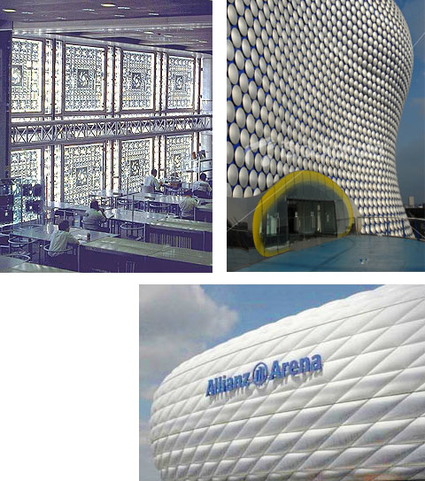In traditional Arabic architecture, half translucent walls or separations in wood or carved stone create private spaces that make looking outside possible without being seen inside. The so called mushrabiya is a lattice screen usually made of turned or carved wood used inside the house, on balconies and windows. They provide light, privacy and ventilation into buildings.
Architects nowadays like to also use walls with perforated material or half open structures to create impressively large and intriguingly decorated facades. For projects related to Arabic culture, modern versions of the mushrabyia are often used. Jean Nouvel made a complicated wall of diaphragms that reacted to the amount of light falling on the walls for the Institut du Monde Arabe in Paris (France). Herzog and de Meuron used partly translucent decorated walls in their project in Cadiz (Spain).


